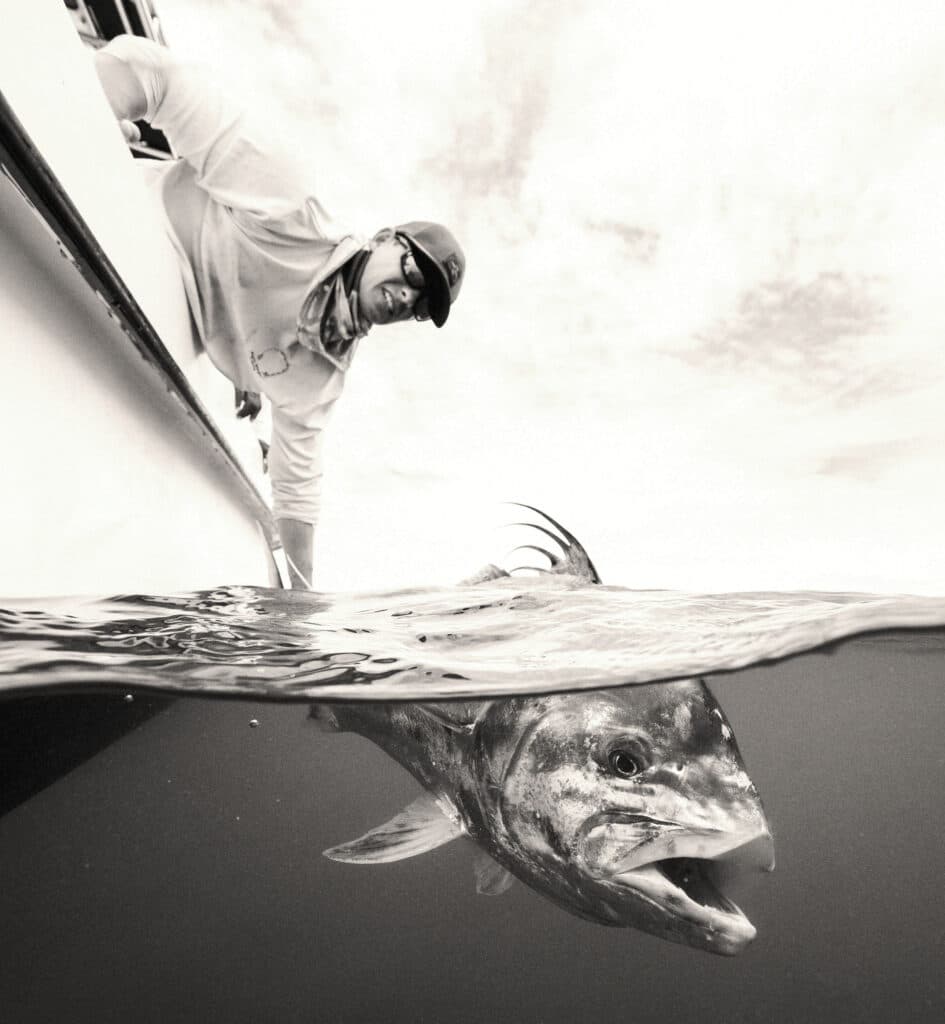
Catch-and-release fishing is exciting, but it doesn’t provide a meal for dinner. Turns out, some of those species you always throw back are worth Keeping. how do you know a fish is unappetizing without trying it? When it comes to taste, one person’s incredible is another’s inedible. what fish taste excellent might surprise you.
Everyone loves eating yellowfin tuna, wahoo or Florida pompano, but what about the many species of fish that anglers don’t consider food? Species such as sea robins that garner disdain, or other catches like rays and sharks that are tough to handle?
Curious, I reached out to more than 20 professionals—charter captains, industry honchos, scientists, fishing writers and others—and asked for their takes on species that people throw back. Most admitted they’ve tried some species not widely thought of as food. The result in the opinion of these pros: Many of these fish should be thrown back, but there are a few surprise species you should definitely give a try. A lot of their responses were enlightening, as these highlights reveal.
Roosterfish
Not many anglers have ever tasted roosterfish. They’re valued and released as trophy gamefish, so few anglers have ever had the opportunity to sample their meat. The consensus of those who have eaten the feisty fighter? Yuck.
Diego Camacho, fishing director at Crocodile Bay Resort in Costa Rica, compares the meat to jack crevalle (more on those later): “Oily, dark and no good.” The most charitable reaction to roosters came from Toby Larocque at Mag Bay Resort in Mexico. “Like skipjack,” he says. When sauteed in butter with garlic, it “wasn’t bad,” but dark and somewhat fishy.
Consensus: Let ’em go; there are far better fish in the sea.
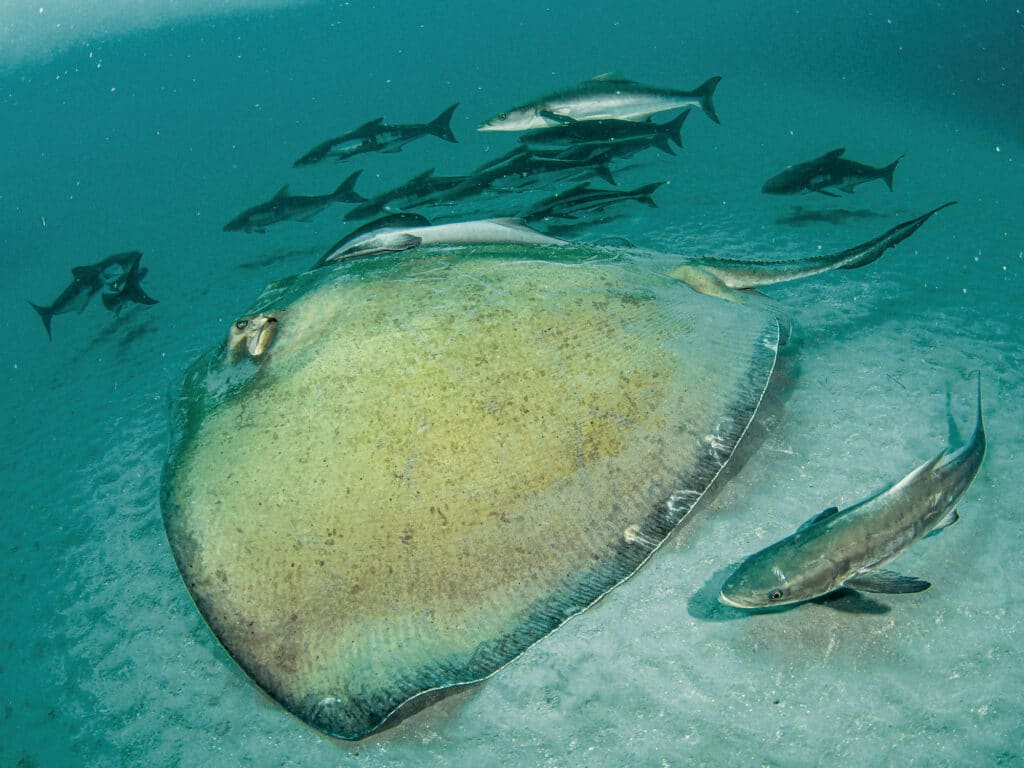
Stingrays and Other Rays
It’s safe to say that many fishermen would consider stingrays undesirable as food based on their appearance, plus the other obvious concern: How the hell do I clean this thing?
“Tender and delectable” is how Byron Stout, a southwest Florida fishing authority, rates the southern stingray. Stout, whose regular fishing reports can be found online, describes the loins along the backbone as “firm, like pork chops.” Stout also chuckles at what he believes is a widespread myth, which is that rays’ wings are punched out commercially with cookie cutters to make sea scallops. Larocque concurs that stingrays are food, noting that those they catch in Magdalena Bay offer “good, light meat.”
When pan-seared, the cow-nosed ray, a species found along both Atlantic and Pacific coasts, is “actually OK—it tastes a little like beef.” That’s according to US Rep. Rob Wittman of Virginia, an ardent angler. The Virginia Institute of Marine Science agrees in a Sea Grant publication, saying it’s a pity that fishermen throw cow-nosed rays back “because this fish is good to eat and easy to clean.”
Wittman cuts the wings off the ray, then fillets the meat away from the piece of cartilage that runs down the center of each wing.
Lizardfish
Yes, we’re deep in the realm of trash fish here. First off, this little scourge that latches onto baits and lures in sandy inshore areas to annoy anglers is seldom large enough to consider eating, even if an angler were improbably inclined to try it.
Ah, but the toothy lizard does grow larger. Large enough to fillet? Absolutely, says Tampa Bay area guide Ray Markham. Some years ago he found a mother lode of monster lizardfish larger than the world record, catching lizards weighing 2 to 3 pounds at least a half-dozen times.
Markham confesses he couldn’t resist taking one home to fillet. He discovered that “a radial, fine-shaped bone structure” made them tough to clean to get boneless fillets. But he says: “The meat was pure white, somewhat flaky and firm. I fried the fillets and, much to my surprise, they tasted somewhat like snook,” a favorite of the guide. The downside, though, was the abundance of fine bones, which prevented Markham from eating more of the fillets.
Florida guide William Toney, based in Homosassa, has sampled a variety of inshore trash fish and found most to be “pretty horrible,” with the exception of the lizardfish, which tasted quite good but couldn’t really be enjoyed due to—you guessed it—the unavoidable bones.
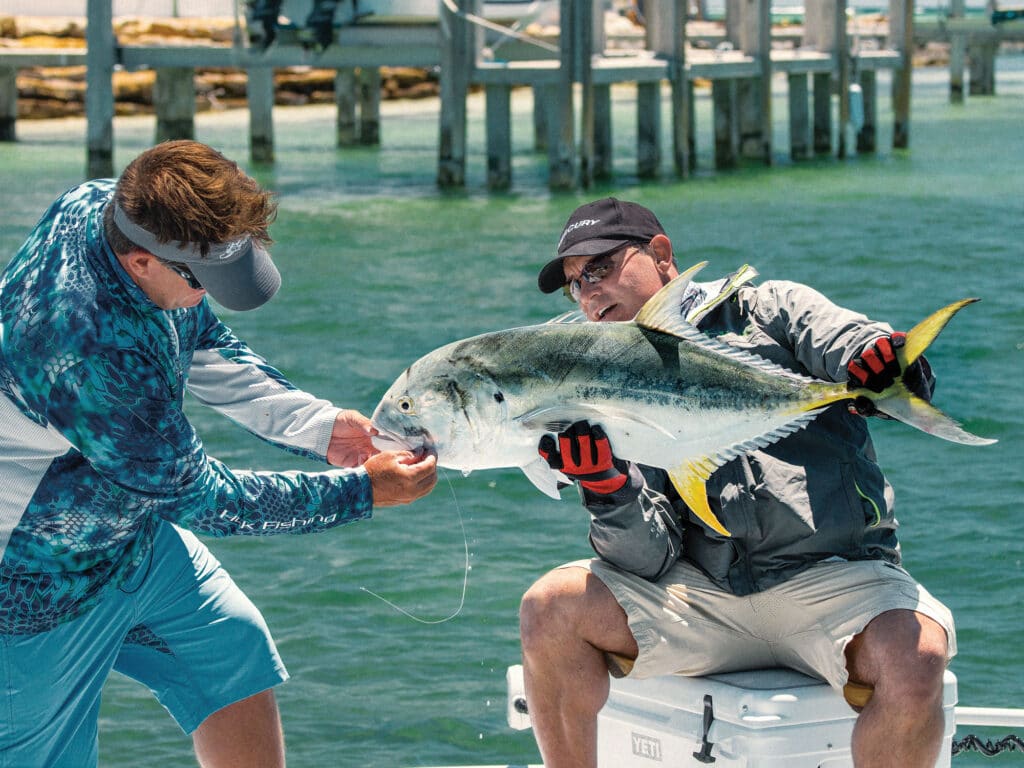
Jack Crevalle
One of the hardest-fighting of all inshore fish, Caranx hippos gets the Rodney Dangerfield treatment up, down and sideways. Why? The only thing it does not offer as a gamefish is good taste. Well, at least so everyone says. Are they right? For most American anglers, probably so. There’s no disputing that the meat is a dark, bloody red and offers a strong flavor. But in the wide world of cultural preferences, we find that fish-eaters in some areas actually savor the flavor. TV fishing personality Mark Davis, based in South Carolina, has released scores of jacks over the years. During a tarpon fishing trip in Trinidad, the cook for Island Yacht Charters prepared the fillets of a big crevalle, coating them with what she called a “classic Trinidad jerk seasoning, and cooking them in a slow cooker overnight.” Davis says he could hardly believe the result. “It tasted like beef and was almost the same texture as a slow-cooked pot roast. Amazing.”
This writer can second that emotion, having been there (Trinidad) and done that (eaten Caribbean-curried jack crevalle). It was mighty tasty. Yes, I tried to duplicate the result back at home and, no, it didn’t live up to that memorable flavor.
Camacho, in Costa Rica, says that folks locally also smoke crevalle and “it tastes really good.”
Read Next: Why Do Small Fish Taste Better Than Big Ones?
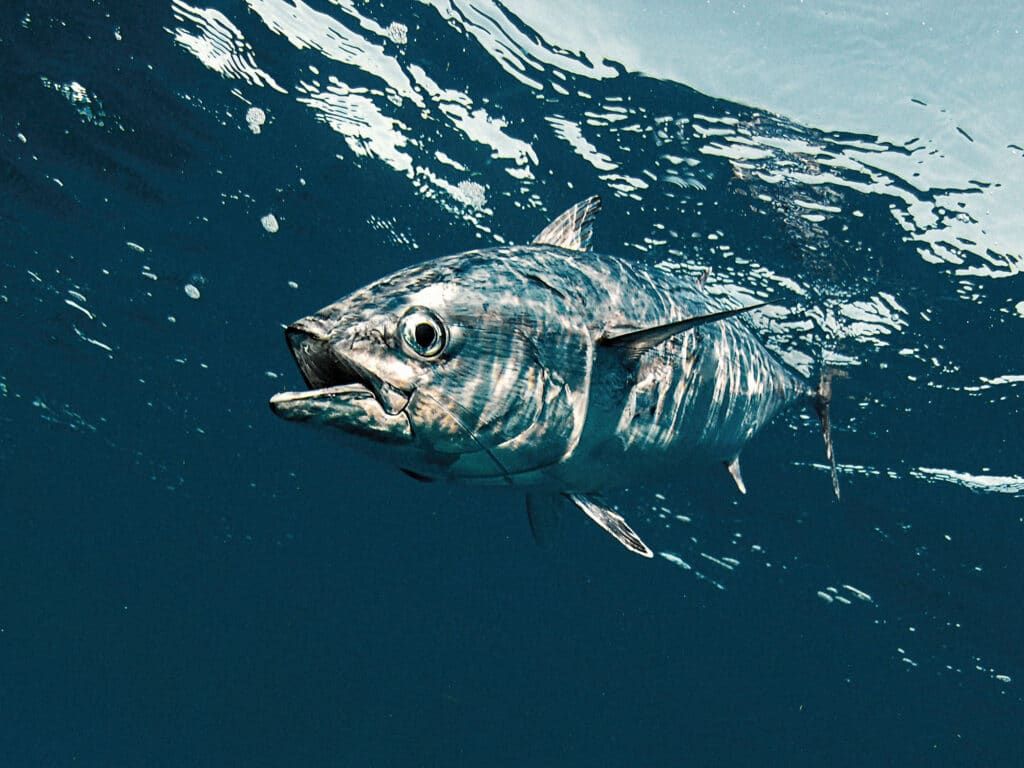
Little Tunny (False Albacore, Bonito)
The schooling coastal tuna Euthynnus alletteratus are respected as gamefish by anglers in the mid-Atlantic and Northeast, where they’re known as false albacore. And why not? They’re fast, beautiful, aggressive biters and fighters, and abundant. The only thing they’re not is good to eat.
Many have tried; many have failed. Jimmy Fee, with On the Water, is one who has tried and found the meat soft with a metallic taste. For some idea of just how bloody dark that meat is, Fee says his executive editor Kevin Blinkoff endeavored to cut away the dark-red meat and sample what remained. The problem: “By the time he had cut away all the dark, bloody meat, there was very little left.”
Rob Wittman, in Virginia, tried parboiling tunny meat and preparing it as fish cakes. He cites the attempt as a fail.
Capt. Adam Peeples, of One Shot Charters in Destin, Florida, has given eating little tunny his best shot, trying it as sashimi and grilled. Either way, it was “not good at all.” He says, “Bonito will forever remain as bait-only in my cookbook.”
Eat Your Bait
Sometimes, though, the bait can be the main course. Stout, in southwest Florida, swears by little glass minnows (bay anchovies). He catches them with a cast net before dusting in cornmeal (sans the head and gills) and frying until crisp, an outstanding treat. Slightly larger species could be eaten similarly, but one has to eat around the bones—too much trouble.
Farther north, Fee has sampled little Atlantic silversides after seining them on the beach. He gutted each, then deep-fried the lot of them, head on. He and his colleagues found the “fries with eyes” tasty, but advises that some might not find them worth the prep time.

Other Surprises
After encountering cutlassfish (aka ribbonfish) schools in the Chesapeake recently, Lenny Rudow, of the popular FishTalk magazine, had to try them. The long, thin fillets proved to be “very flounderish” in flavor—“clear white, not at all strong.” They were perfect for a pinwheel with crabmeat, he says. In many countries (though not the US), cutlassfish are highly valued as food, with directed commercial fishing.
When describing a fermented meat dish of Greenland shark that Icelanders call kæstur hákarl as “a rancid glob of rotten snot,” Wales-based fishing writer Dave Lewis pretty clearly places this species in the thanks-but-no-thanks column. To make this dish, Lewis says, Greenland shark meat is buried underground to ferment, then hung to dry for a few months. How could that not be delicious?
Then there’s the houndfish (a larger version of the needlefish). These surface-loving coastal predators are long, narrow missiles with slender, bony, tooth-filled mouths. It’s another fish that most Americans have no interest in eating. That’s a mistake, says Adrian Gray, of the International Game Fish Association. While fishing in Antigua recently, Gray cleaned and ate a 3-foot-long houndfish. “It was delicious. The slender fillets were firm, the flesh flaky and pure white, tasting sweet.” He noted that the flesh had a bluish color before cooking. Some species of houndfish (family Belonidae) commonly reach 5 feet or more, offering a considerable amount of meat.
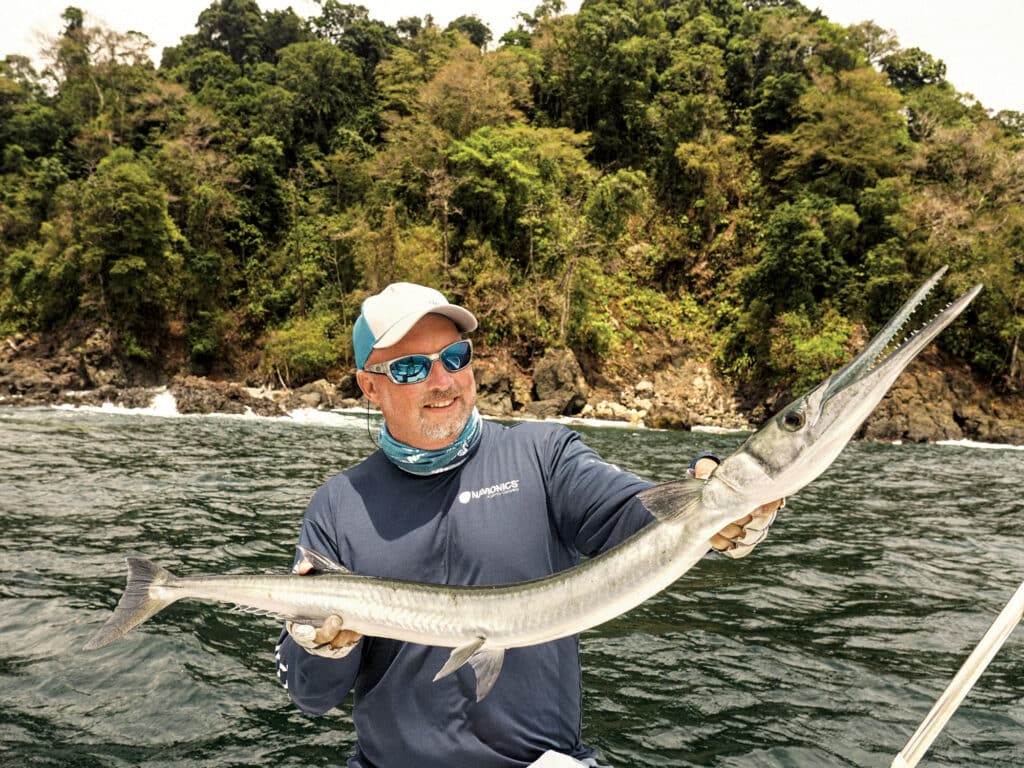
The northern sea robin, a common catch in cooler Atlantic inshore waters, can be a bit of a pest, says Fee, but the small fish with the huge “wings” has two meaty back straps that taste great fried. In the same areas, anglers often catch (and curse) the northern puffer, aka blow toad. Despite that unappetizing moniker, many anglers target them simply because they’re outstanding to eat, mild and tasty. And unlike the southern variety, the northern puffer is safe, not a source of deadly fugu toxin.
Not so tasty are the ubiquitous Bermuda chubs, says Key West guide Tony Murphy. They were so plentiful, he says, they had to try them, having the Rusty Anchor restaurant fry them up. The verdict: “They tasted like sh*t.”
One of the most unlikely contenders for a tasty meal is the bottom-dwelling nurse shark, normally an unappealing species from any angle. “Maybe from their diet of tasty crustaceans, nurse shark meat is snowy white and much more tender than more highly regarded sharks, such as blacktips and makos,” Stout says. However, he points out that fishery managers no longer allow anglers to sample small specimens. “The minimum size is 54 inches, which is a whole lot of nurse shark.”









